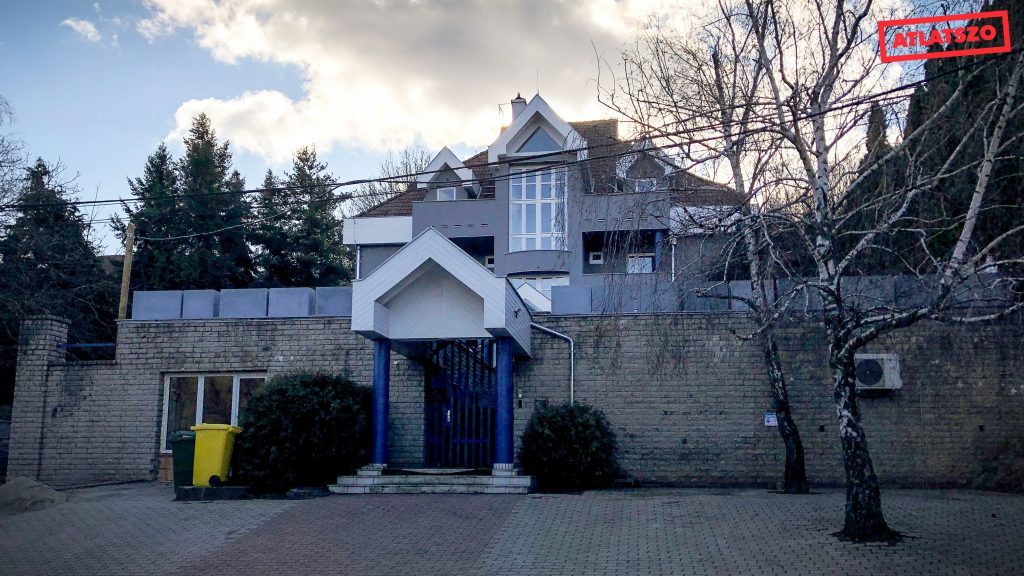The https://english.atlatszo.hu use cookies to track and profile customers such as action tags and pixel tracking on our website to assist our marketing. On our website we use technical, analytical, marketing and preference cookies. These are necessary for our site to work properly and to give us inforamation about how our site is used. See Cookies Policy
Data Protection Authority rules Atlatszo’s camera drone footage of propaganda tzar’s private property legal
Átlátszó released drone footage taken of the newly purchased luxury mansion of Gyula Balásy and his companies. Balásy is one of the owners in New Land Media Kft. and Lounge Design Kft., organisers of governmental propaganda campaigns for tens of billions of forints every year. According to Balásy, his rights to personal data protection were violated, so he first turned to Átlátszó, but when we refused to delete the footage, he took action at the National Authority for Data Protection and Freedom of Information (NAIH). According to NAIH’s latest decision, Balásy’s course of action was unfounded, because domestic and international legislation allows for taking drone footage regarding public affairs as part of freedom of the press.

Since October of 2019 the headquarters of New Land Media Kft. and Lounge Design Kft. is a luxurious property that was acquired by Gyula Balásy in Budapest’s wealthy neighbourhood called Rózsadomb. In February, Átlátszó published camera drone footage of the huge mansion that formerly operated as a motel.
Budai luxusvillába költöztek Balásy Gyula reklámcégei – drónvideó from atlatszo.hu on Vimeo.
The GDPR legal framework sets strict conditions on when it is possible to handle personal data. According to Gyula Balásy’s complaint, none of the conditions set by the GDPR was met when we published the drone footage of the property owned by him, which is why he requested Átlátszó to remove the video.
When we refused to remove the footage, Balásy turned to NAIH. During the procedure, Átlátszó cited the section on the possibilities of legal personal data procession, producing a four-page legal explanation on why taking the footage and releasing it to the public was essential for the generally established purposes of exercising legitimate interests.
Átlátszó’s argument was accepted by the authorities, which holds a special significance regarding investigative journalism. It is much harder to understand getting rich on public funds when you hear that somebody received 8 billion forints in dividends from companies that organise governmental propaganda campaigns, as opposed to seeing the luxury mansion bought from a small part of this money on quality images.
Seeing the tangible embodiment of wealth helps the aim of informing the public much more than disclosing reasonably inconceivable numbers. The difference between a tower block apartment and a luxury mansion is probably easier to understand for the average citizen than the difference between somebody making 80 million forints or 8 billion forints, though 80 million possibly would not be enough for buying land for a luxury mansion in Buda. This is why we shortly describe the reasoning along which NAIH declared that this specific case, when a press product took camera drone footage of a private individual’s mansion and its parts that cannot be seen from any public area, was legal.
- According to the practices of both The Constitutional Court of Hungary and the European Court of Human Rights, freedom of speech, freedom of press and the right for debate about public issues and the right for providing information on public issues are specially protected fundamental rights.
- It is an essential interest of providing information to the public to inform about the financial situation of the two companies concerned and Gyula Balásy, who is one of the owners in these companies, and also to be able to evaluate the processes that led up to the current situation with the help of this fundamental information.
- The property shown on the drone videos is registered as headquarters for both of the companies from which Gyula Balásy took billions in dividends.
- It was necessary to disclose the information introduced in the article and the images taken from public areas as illustration, because the footage helped to show the property’s outstanding location and exclusivity (conditions that are greatly important to the purposes of providing information) to the public.
- Only the property and its location was shown on the footage, no persons or information regarding the owner of the property, and no conclusion that would have a negative influence on the rights or the legitimate interests of the person concerned can be drawn from the footage, while the ownership of the property is available to anyone from the business registry and the land registry.
The ruling is obviously much more detailed, anyone interested in legal subtleties can read the whole 14-page text in Hungarian here. It is obvious from the text (even from the summary of reasons) that press video footage taken of a private property can only be declared legal if it has a strong connection to the subject matter, and it contains no protected personal data – practically it should not show human activity.
Written by Balázs Tóth, translated by Jakab Tengerdi. The Hungarian version of this article and Atlatszo’s detailed legal arguments are available here.


